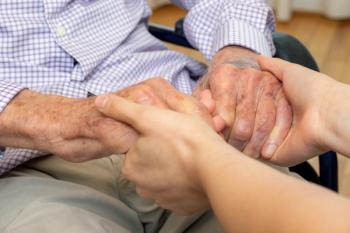
Using glucose monitoring devices to help patients manage their diabetes
The devices are more widely available, and motivated patients can use them as tools to improve their health, says Dr. Robert McCauley of Lehigh Valley Health Network.
The Lehigh Valley Health Network sees a wide range of patients in northeastern Pennsylvania who need treatment for diabetes.
The health system recently became
Dr. Robert McCauley, chief of endocrinology at Lehigh Valley Health Network, says the advent of new medications to manage diabetes have been important steps to help people control their diabetes.
He also speaks enthusiastically about the growing usage of continuous glucose monitoring systems, which allow people to check their own glucose levels quickly at any time, and throughout the day.
“The nice thing that we're seeing is a lot of technology, so having a lot of people who are on the continuous glucose monitoring system, CGM, really does help a lot in terms of controlling the diabetes and management,” McCauley says.
McCauley says Lehigh Valley has encouraged many of their diabetes patients to use continuous glucose monitoring systems. Glucose monitoring devices offer some appeal to patients, such as avoiding the unpleasant finger sticks to check blood sugar levels.
But the glucose monitoring systems offer some valuable advantages to providers, McCauley says.
“We can see so much data in terms of how things are going before meals, after meals, overnight, when they may not check normally,” he says. “One thing that I really try to push for my patients is to use it themselves, not just using it to check a blood sugar at a moment in time, but really using it to find how they respond to the foods they are eating, how they respond to exercise or medication.”
In some instances, patients may say they saw an uptick in their sugar levels after drinking a soda, and knowing they need to watch their intake.
“And I think that sort of the beauty of these devices is when patients can see the results of their actions and make meaningful changes to their behaviors,” McCauley says.
For motivated patients, glucose monitoring devices can be “huge,” he says.
“I've seen patients who really go from having no clue what's happening to really being mindful of their diet, their activities, and really getting their diabetes control much better,” McCauley says.
While glucose monitoring devices can help patients, they aren’t very effective if patients aren’t checking their blood sugar on a regular basis.
“Sometimes we have that patient … they won't do anything,” McCauley says.
In those instances, they’ll try and encourage patients to meet modest targets, such as checking their blood sugar just once a day.
McCauley says “motivational interviewing” can be useful, in terms of getting the patients to articulate their goals and helping them to work toward those targets.
Lehigh Valley also offers health coaching to patients who are interested, which can help them get more engaged, McCauley says. Some of those coaches will talk to patients on the phone.
“They're really good at motivational interviewing and getting people to kind of set those goals that are going to work for them,” he says.
McCauley emphasizes the importance of working with the patient rather than dictating how often they should use the devices. He talks about the need of getting the patient to agree to a plan, even if it involves modest goals.
The results can vary, depending on how much patients will take charge on modifying their diet or getting exercise, and how much they are using the devices to check their blood sugar, he says.
“Sometimes it works great, and you know, after several appointments, we see they're doing better,” McCauley says. And for some patients, perhaps they didn’t improve, but maybe their condition didn’t get any worse.
In many cases, he says, it’s valuable to “certainly celebrate the little wins that we can.”
And for some patients, the continuous glucose monitoring systems are helping patients take a step forward, he says.
“Living with diabetes is not easy,” McCauley says. “I mean, it's a challenge. So many different aspects of life impacts your diabetes control. So whatever you can do to recognize their successes and try to make it as easy as possible … I think we try to.”








































